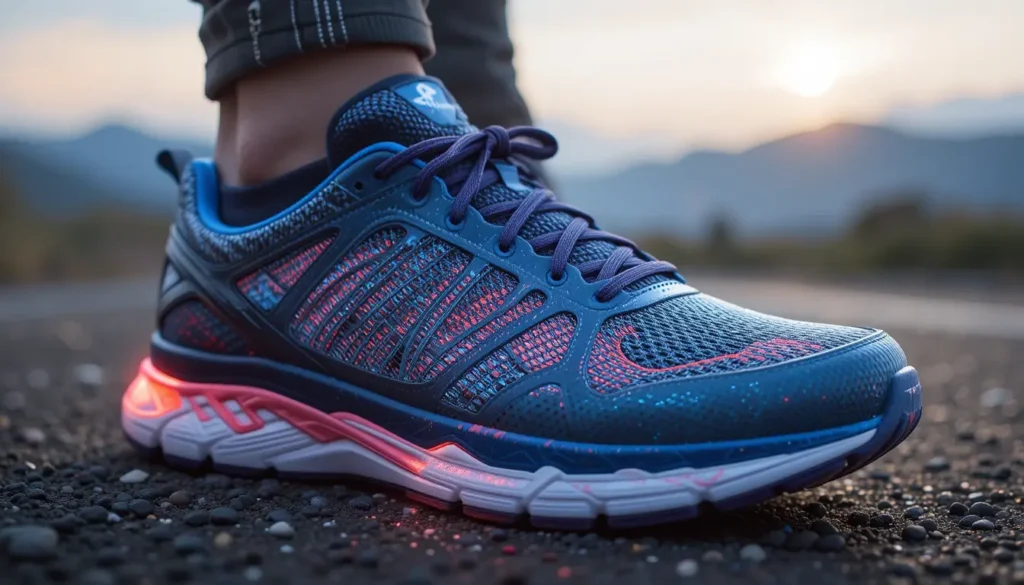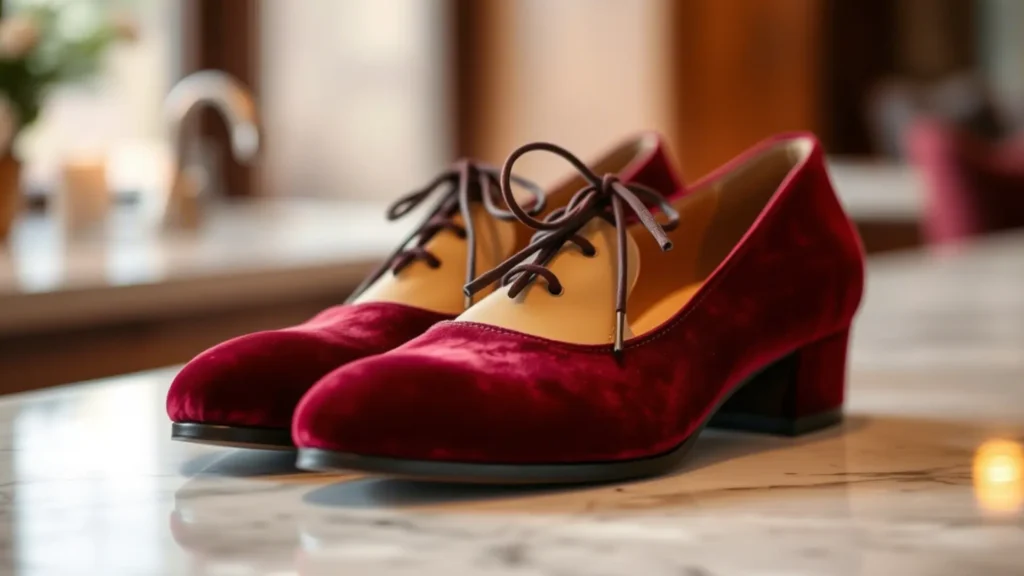Imagine waking up each morning with the confidence to move freely, without the constant worry of losing your balance or stumbling. For many, this is a daily challenge.
But what if the solution lies beneath your feet? Orthopedic shoes, often overlooked, are designed to provide more than just comfort—they can be the key to enhancing your balance and stability.
Orthopedic shoes are specially crafted footwear that offer superior support, cushioning, and alignment for your feet.
Unlike regular shoes, they are tailored to address specific foot issues such as flat feet, high arches, or conditions like arthritis and plantar fasciitis. By focusing on proper foot mechanics, these shoes aim to improve overall posture and movement.
The Science Behind Balance and Stability
Our feet are equipped with specialized sensory receptors known as mechanoreceptors, which are crucial for maintaining balance and stability. These mechanoreceptors are embedded in the skin of the foot sole and are sensitive to various stimuli, such as pressure, vibration, and stretch.
When we stand, walk, or move, these receptors detect changes in the surface we are on and send real-time signals to the brain about our body’s position and movement. This continuous flow of information allows our brain to make rapid adjustments to maintain balance.
There are several types of mechanoreceptors in the feet, each with specific functions:
- Fast-Adapting Mechanoreceptors (FA): These receptors respond quickly to changes in pressure and are primarily involved in detecting dynamic stimuli, such as movement or vibration.
- Slow-Adapting Mechanoreceptors (SA): These receptors provide information about sustained pressure and are essential for detecting the position and shape of surfaces underfoot.
The combined input from these mechanoreceptors enables the central nervous system to process information about the ground’s texture, slope, and stability, which is vital for postural control and preventing falls.
How Poor Footwear Affects Balance
Wearing ill-fitting or unsupportive shoes can disrupt the function of these mechanoreceptors. Shoes that lack proper cushioning, arch support, or have a slippery sole can reduce the sensitivity of the foot’s sensory receptors, leading to diminished proprioception.
This reduction in sensory feedback can impair the brain’s ability to make quick adjustments, increasing the risk of losing balance and falling.
Orthopedic shoes are designed to address these issues by providing features that support and stimulate the foot’s sensory system:
- Proper Arch Support: Orthopedic shoes offer built-in arch support, which helps in maintaining the natural alignment of the foot. This support ensures that the weight is evenly distributed across the foot, reducing strain on muscles and joints.
- Cushioning: Adequate cushioning absorbs impact forces during walking or standing, protecting the feet from stress and enhancing comfort.
- Non-Slip Soles: Shoes with textured, non-slip soles provide better traction, reducing the likelihood of slipping on smooth or uneven surfaces.
- Footbed Design: Some orthopedic shoes feature insoles with nodules or textured surfaces that stimulate the mechanoreceptors in the feet, enhancing sensory feedback and improving proprioception.
Benefits of Orthopedic Shoes on Balance
Enhanced Foot Alignment
Proper alignment of the feet is one of the most critical factors in maintaining overall balance and stability. Misaligned feet can lead to uneven weight distribution, increased strain on the ankles, knees, and hips, and a higher likelihood of trips or falls.
Orthopedic shoes are specifically designed to correct common misalignments such as overpronation, where the foot rolls inward excessively, or supination, where the foot rolls outward.
These shoes incorporate features such as built-in arch support, structured heel cups, and stabilizing midsoles, which work together to realign the foot into a neutral position. This correction ensures that body weight is distributed evenly across the foot, reducing excessive stress on joints and improving posture.
For people with flat feet, high arches, or prior injuries, proper foot alignment provided by orthopedic shoes can significantly enhance walking stability and decrease the risk of chronic pain or falls.
Research shows that even small improvements in foot alignment can positively affect gait patterns, making each step more stable and controlled. By providing a solid and correctly aligned foundation, orthopedic shoes help the entire body maintain balance, from the feet all the way up to the spine.
Improved Proprioception
Proprioception is the body’s ability to sense its position and movement in space without visual input. It relies on feedback from sensory receptors in the muscles, tendons, and soles of the feet. When proprioception is strong, the body can quickly adjust to uneven surfaces or unexpected movements, maintaining balance effortlessly.
Orthopedic shoes enhance proprioception by creating a stable, supportive base and improving foot-to-ground contact. Features such as textured insoles, firm yet flexible midsoles, and customizable orthotics stimulate the foot’s sensory receptors, sending clear signals to the brain about body position.
This feedback allows for faster and more precise adjustments, especially on uneven or slippery surfaces.
Improved proprioception also reduces the likelihood of missteps or sudden loss of balance. For individuals recovering from injury, older adults, or anyone with a condition affecting foot sensation, orthopedic shoes can train the body to respond more efficiently to changes in terrain.
Over time, this heightened awareness of foot placement contributes to safer walking, improved stability, and a reduced risk of falls.
Reduced Risk of Falls
Falls are a major health concern, especially for older adults or individuals with chronic foot and joint conditions. Even minor missteps can result in serious injuries, including fractures or joint damage.
Orthopedic footwear plays a crucial role in fall prevention by enhancing balance and providing a stable base for walking and standing.
Studies have demonstrated the effectiveness of orthopedic shoes in reducing fall risk. For example, research on individuals with Hereditary Motor Sensory Neuropathy showed that orthopedic footwear improved gait speed, step length, and other spatiotemporal parameters of walking.
These improvements allowed participants to walk with greater stability and confidence, reducing the likelihood of tripping or stumbling.
By supporting proper foot alignment, distributing body weight evenly, and improving sensory feedback from the soles, orthopedic shoes make it easier to maintain balance during everyday activities. This is especially valuable for people with weakened muscles, joint instability, or diminished foot sensation, all of which increase fall risk.
Enhanced Gait and Mobility
Orthopedic shoes do more than prevent falls—they actively improve how people move. By offering proper support and cushioning, these shoes reduce discomfort in the feet, ankles, and lower legs, which can lead to less fatigue during walking or standing.
This allows individuals to move more freely, confidently, and for longer periods.
For people with conditions affecting mobility, such as arthritis, neuropathy, or prior lower-limb injuries, orthopedic shoes can significantly improve walking mechanics.
They provide shock absorption, heel stabilization, and arch support, which help maintain a smooth and consistent gait pattern. Improved gait not only increases mobility but also reduces strain on joints, lowering the risk of secondary injuries and chronic pain.
Over time, wearing orthopedic shoes can help individuals regain a greater level of independence. By combining comfort, support, and balance enhancement, these shoes make daily activities—walking, climbing stairs, or standing for extended periods—safer and more manageable.
Choosing the Right Orthopedic Shoes
Selecting the appropriate orthopedic shoes is essential for maximizing their benefits. Consider the following factors:
- Foot Type: Determine whether you have flat feet, high arches, or other specific conditions.
- Fit: Ensure the shoes fit properly, providing adequate space in the toe box and snugness around the heel.
- Arch Support: Look for shoes with built-in arch support or consider custom orthotics.
- Cushioning: Opt for shoes with adequate cushioning to absorb shock and reduce pressure points.
- Sole Design: Choose shoes with non-slip soles to provide traction and prevent slipping.
Consulting with a podiatrist or orthopedic specialist can provide personalized recommendations based on your specific needs.
Orthopedic shoes are more than just a comfort accessory—they are a vital tool in enhancing balance and stability. By addressing foot misalignments, improving proprioception, and reducing the risk of falls, these shoes play a crucial role in supporting overall mobility and quality of life.
Investing in the right pair of orthopedic shoes can be a step towards a more balanced and stable future.
Remember, your feet are the foundation of your body. Taking care of them with the right footwear can lead to improved balance, reduced discomfort, and a more active lifestyle.




